
Browse an alphabetical list of photographs. These historical images portray people, places, and events before, during, and after World War II and the Holocaust.
<< Previous | Displaying results 201-250 of 2641 for "Photo" | Next >>
Defendant Albert Speer during the International Military Tribunal trial of war criminals at Nuremberg. Germany, between November 20, 1945, and October 1, 1946.
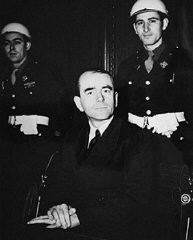
The defendants and their lawyers at the International Military Tribunal trial of war criminals at Nuremberg. Defendant Albert Speer (standing at right) delivers a statement in the dock. Nuremberg, Germany, November 20, 1945-October 1, 1946.
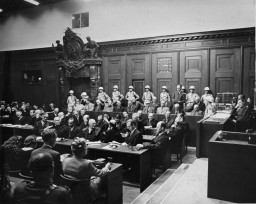
Aleksander Belev, Bulgarian commissioner for Jewish Affairs (center, wearing hat and facing the camera), oversees the deportation of Jews. Skopje, Yugoslavia, March 1943.

Alexander G. Hardy, associate counsel for the prosecution, during the Doctors Trial. Nuremberg, Germany, December 9, 1946-August 20, 1947.
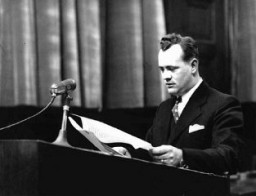
Alexander White in Chicago, 1948, after he immigrated to the United States. Nearly 40 years later Alex would run into the only other survivor of the Bor labor camp that Alexander fled from to join the partisans.
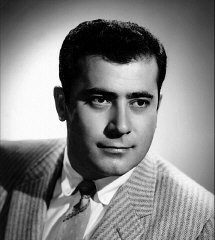
Former Nazi Party ideologist Alfred Rosenberg on trial at the International Military Tribunal war crimes trial. Nuremberg, Germany, April 15, 1946.
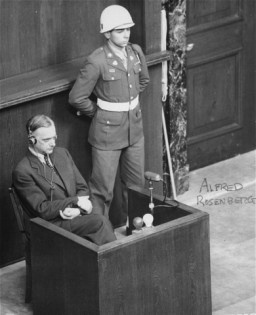
Defendant Alfred Rosenberg, the former chief Nazi Party ideologist, reads a document during the International Military Tribunal trial of war criminals at Nuremberg. Behind him is his co-defendant General Alfred Jodl, formerly the Chief of Staff for the Army. Nuremberg, Germany, 1945–1946.
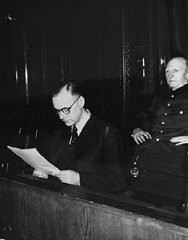
Alfred Rosenberg's 1923 commentary on the Protocols reinforced Nazi anti-Jewish ideology. This is the fourth edition. Published in Munich, 1933.
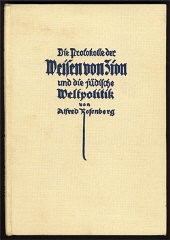
Alice and Heinrich Muller pose for a photograph while in costume for the Purim holiday. Hlohovec, Czechoslovakia, ca. 1934–35.
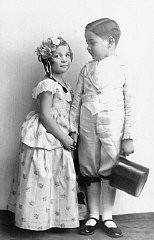
The Aliyah Bet ("illegal" immigration) ship Parita, carrying 850 Jewish refugees, lands on a sandbank off the Tel Aviv coast. The British arrested the passengers and interned them at Atlit detention camp. Palestine, August 21, 1939.
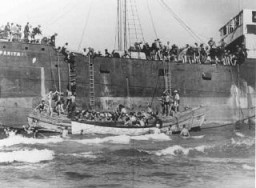
Aliyah Bet ("illegal" immigration) ship Tiger Hill, carrying Jewish refugees from Europe, lands in Tel Aviv, Palestine. Jewish residents of Palestine greet the ship. September 1, 1939.
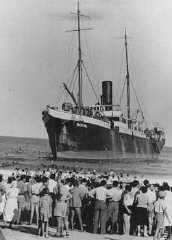
Jewish refugees on board the Aliyah Bet ("illegal" immigration) ship Atrato. The ship was caught by the British off the coast of Jaffa, Palestine, and escorted to Haifa port. July 17, 1939.
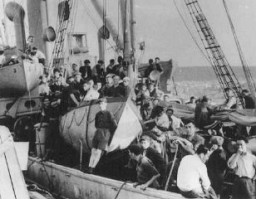
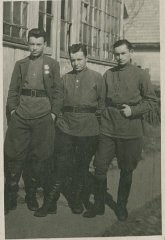
Allied delegates in the Hall of Mirrors at the palace of Versailles witness the German delegation's acceptance of the terms of the Treaty of Versailles. The treaty formally ended World War I. Versailles, France, June 28, 1919.
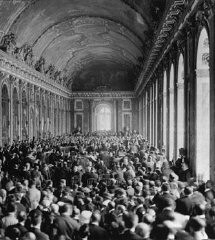
Allied troops board amphibious assault boats off the Algerian coast during Operation Torch. North Africa, November 1942.
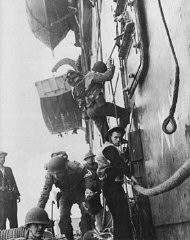
Allied troops march in Tunis following Allied success against Axis forces in the African Campaign. Tunis, Tunisia, May 20, 1943.
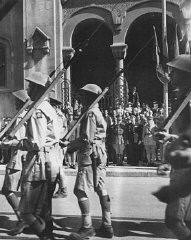
Alter Dvoretsky, head of the Zhetel Judenrat (Jewish council) and leader of the Zhetel underground.
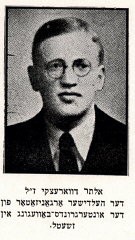
1949 photograph of Amalie and Norman Salsitz in Brooklyn, New York, two years after they came to the United States. With the end of World War II and collapse of the Nazi regime, survivors of the Holocaust faced the daunting task of rebuilding their lives. With little in the way of financial resources and few, if any, surviving family members, most eventually emigrated from Europe to start their lives again. Between 1945 and 1952, more than 80,000 Holocaust survivors immigrated to the United…
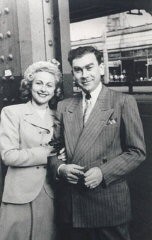
Amalie and Norman Salsitz go to Israel to visit family members. Lod (Lydda), Israel, February 9, 1949. With the end of World War II and collapse of the Nazi regime, survivors of the Holocaust faced the daunting task of rebuilding their lives. With little in the way of financial resources and few, if any, surviving family members, most eventually emigrated from Europe to start their lives again. Between 1945 and 1952, more than 80,000 Holocaust survivors immigrated to the United States. Norman was one of…
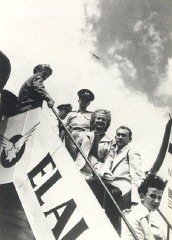
June 6, 1991, photograph showing Amalie and Norman Salsitz with a copy of their book, Against All Odds. With the end of World War II and collapse of the Nazi regime, survivors of the Holocaust faced the daunting task of rebuilding their lives. With little in the way of financial resources and few, if any, surviving family members, most eventually emigrated from Europe to start their lives again. Between 1945 and 1952, more than 80,000 Holocaust survivors immigrated to the United States. Norman was one of…
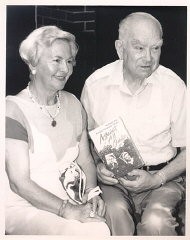
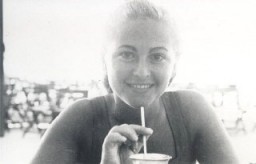
Amalie Petranka (later Salsitz) at 22 years of age. She gave this photo to Norman Salsitz shortly after they met. Photograph taken in Stanislawow, Poland, on October 10, 1939.
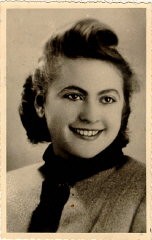
Amalie (left) with her grandmother and sister Pepka in Tel Aviv, Israel, 1949.
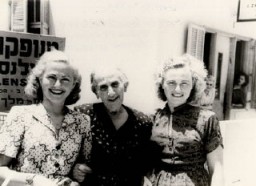
Members of the Amarillo family pose outside their home in Salonika. Front, from left to right, are Tillie Amarillo and Sarika Yahiel. Seated behind them are their mothers Louisa Bourla Amarillo and Regina Amarillo Yahiel. Standing are Saul Amarillo, Isaccino Yahiel, and Isaac Yahiel. Salonika, Greece, between 1930 and 1939.
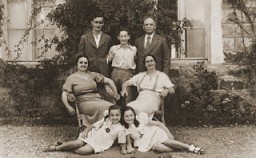
African American athletes Jesse Owens and Dave Albritton pose with a German citizen. They both competed in the 1936 Olympic Games. Albritton won the silver medal in high jump. Owens won gold medals in the 100-meter dash, 200-meter dash, broad (long) jump, and the 4x100-meter relay.
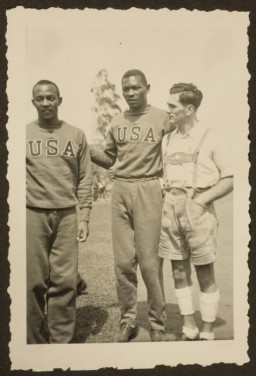
Cartoon depicting the United States' response to the refugee crisis in Europe, as well as the racism and discrimination African Americans faced at home. The Pittsburgh Courier, April 16, 1938. Page 10. Domestic concerns in the United States, including unemployment and national security, combined with prevalent antisemitism and racism, shaped America's immigration policies, responses to Nazism, and willingness to aid European Jews.
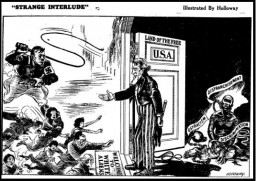
Dr. Bernard Deutsch, president of the American Jewish Congress (center) and Rabbi Stephen S. Wise (right) participate in a mass demonstration against Nazi treatment of German Jews. The demonstration took place on the same day as the book burnings in Germany. New York, United States, May 10, 1933.
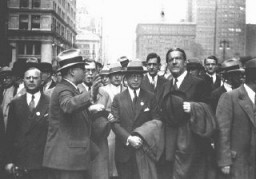
Ernest Hemingway, among the greatest American novelists, was a member of the "Lost Generation" of expatriate writers who were disillusioned by war. In 1933 the Nazis burned Hemingway's novels as part of the public book burning in Berlin. United States, ca. 1950.
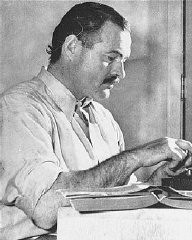
Survivors of Mauthausen cheer American soldiers as they pass through the main gate of the camp. The photograph was taken several days after the liberation of the camp. Mauthausen, Austria, May 9, 1945.
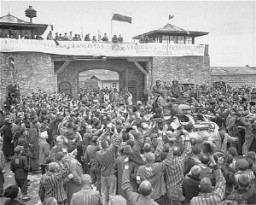
American troops, including African American soldiers from the Headquarters and Service Company of the 183rd Engineer Combat Battalion, 8th Corps, US 3rd Army, view corpses stacked behind the crematorium during an inspection tour of the Buchenwald concentration camp. Among those pictured is Leon Bass (the soldier third from left). Buchenwald, Germany, April 17, 1945.
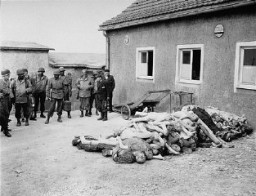
An aerial view of Amsterdam. The photograph was taken for German military use. Amsterdam, the Netherlands, 1939-1940.
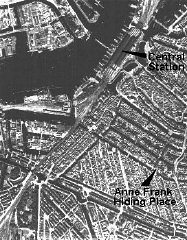
An African-American soldier with the 12th Armored Division, Seventh U.S. Army, stands guard ov...
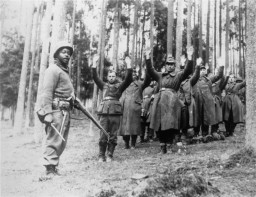
Laurette Cohen (front row, far right) poses with her students at an Alliance Israelite School in Morocco. 1935. Laurette was born in Oran, Algeria, 1911. In 1932, she married Prosper Cohen (born in Meknes in 1909). They were both teachers for the Alliance Israelite Universelle Schools in Morocco. Their daughter, Mathilde, was born in Tangiers on August 31, 1933. Before 1939, the family lived in Meknes and Fez. Later, Laurette and Prosper were sent to teach in other different locations where they were…
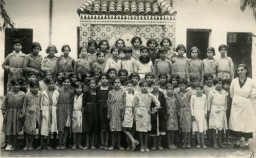
An American soldier stands guard in front of the Hadamar Institute. The photograph was taken by an American military photographer soon after the liberation. Germany, April 5, 1945.
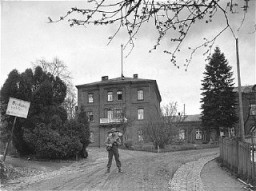
Photograph of a display entitled "British Freemasonry." It appeared in an anti-Masonic exhibition at a Berlin museum. Germany, March 7, 1941.
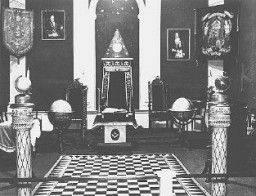
This Arabic translation of the Protocols by Ajaj Nuwayid also has appeared on a website sponsored by the Palestinian State Information Service. Published in Beirut, Lebanon, 1996.
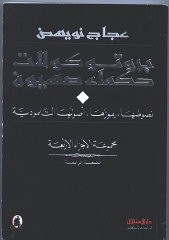
An Armenian refugee, wearing a scarf and a pack on her back. Ottoman Empire, 1918-20. Sometimes called the first genocide of the twentieth century, the Armenian genocide refers to the physical annihilation of Armenian Christian people living in the Ottoman Empire from spring 1915 through autumn 1916. There were approximately 1.5 million Armenians living in the multiethnic Ottoman Empire in 1915. At least 664,000 and possibly as many as 1.2 million died during the genocide, either in massacres and…
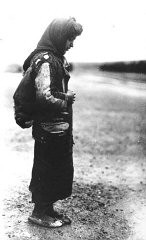
An Armenian woman and her child sit on a sidewalk next to a bundle of their possessions. Ottoman Empire, 1918–20.
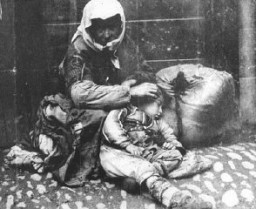
Crematorium 4 under construction. This crematorium was later destroyed during an uprising in the camp. Auschwitz-Birkenau, Poland, winter 1942-1943.
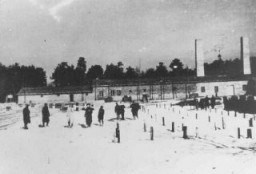
Many of the early concentration camps were improvised. Here, roll call is held for political prisoners aboard a ship used as a floating concentration camp. Ochstumsand camp, near Bremen, Germany, 1933 or 1934.
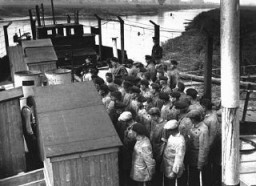
Portrait of an elderly Jewish woman wearing a Jewish badge in the Olkusz ghetto. Olkusz , Poland, 1941.
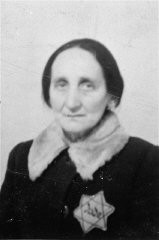
Soon after liberation, a US Army doctor examines an emaciated forced laborer, a Soviet prisoner of war. Dortmund, Germany, April 30, 1945.
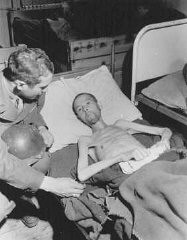
Shortly after liberation, an emaciated concentration camp inmate stands between two members of the International Red Cross. Theresienstadt, Czechoslovakia, May 1945.
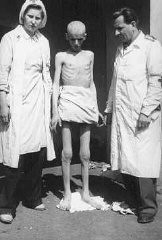
An emaciated woman sells the compulsory Star of David armbands for Jews. In the background are concert posters; almost all are destroyed. Warsaw ghetto, Poland, September 19, 1941. This photograph was taken by Heinrich Joest, a German army sergeant during World War II. On September 19, 1941, he took 140 images of every aspect of life and death in the Warsaw ghetto.
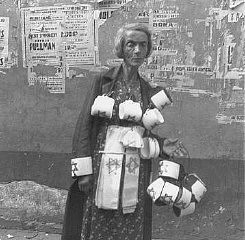
14-year-old Sara Bialovadska, imprisoned in the Kaiserwald concentration camp near Riga. Latvia, 1943.

A Soviet army instructor trains partisans in the use of grenades. Soviet Union, wartime.
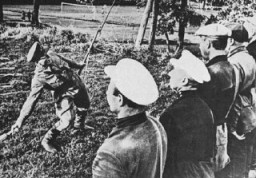
Detail of an interior bridge at the United States Holocaust Memorial Museum with the names of victims etched in glass. Washington, DC, 1996.
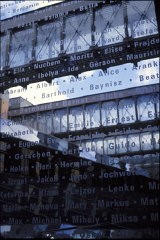
Interior designer from Duesseldorf who was charged with homosexuality and imprisoned for 18 months. Duesseldorf, Germany, date uncertain.
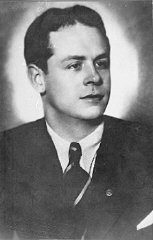
This photograph shows a market scene at the main square in Lwów, Poland, shortly before the outbreak of World War II. Sitting on the fountain is a man holding a chicken and a basket, likely filled with groceries. His long beard and style of dress, including the overcoat and fedora, identify him as a more traditional, religious Jew. Traditionally, observant Jewish men wore beards and kept their heads covered. An elderly woman selling produce sits on the pavement near the man. In contrast to the man, the…
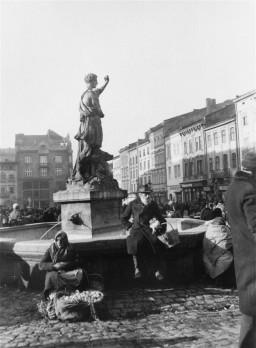
An SS guard examines piles of clothing belonging to the more than 33,000 Jews murdered at the nearby Babyn Yar killing site. The SS forced the victims to undress and leave their belongings behind. The Jews were then marched or driven to the shooting site. Kyiv (Kiev), German-occupied Soviet Union, after September 30, 1941.
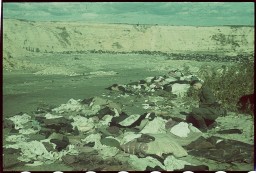
We would like to thank Crown Family Philanthropies, Abe and Ida Cooper Foundation, the Claims Conference, EVZ, and BMF for supporting the ongoing work to create content and resources for the Holocaust Encyclopedia. View the list of donor acknowledgement.